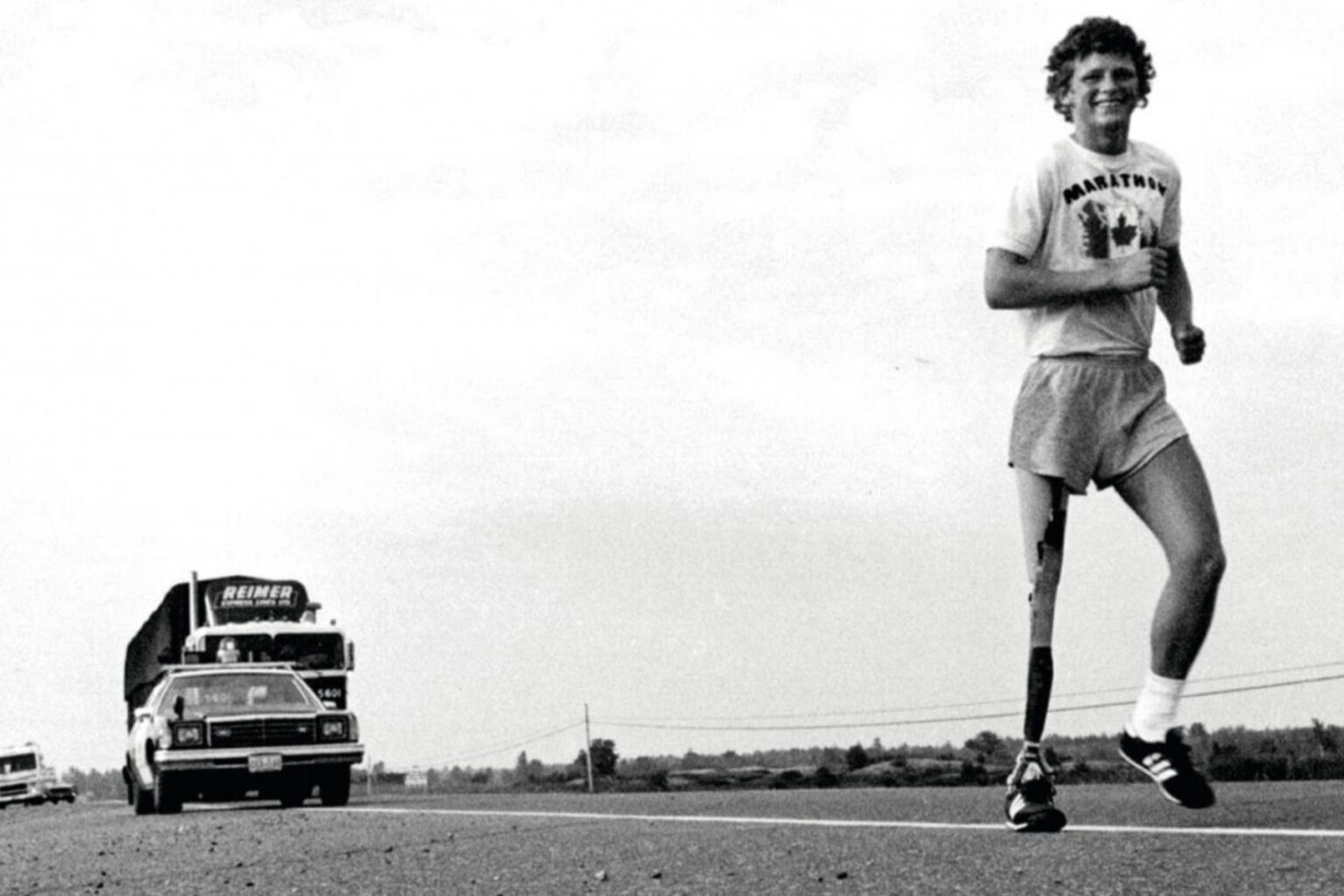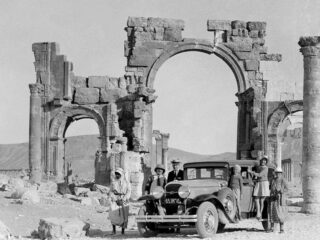In Winnipeg, a young Canadian hero was born. Terry Fox had a spirit that inspired millions. He started a journey that became a symbol of hope for cancer research.
His story is not about being an athlete. It’s about human courage. At 18, Terry was diagnosed with osteosarcoma, a tough bone cancer. But for him, it sparked an incredible mission.
The Marathon of Hope was more than a run. It was a fight against cancer. With one prosthetic leg, Terry Fox aimed to cross Canada. He turned his pain into a movement of hope and healing.
Key Takeaways
- Terry Fox was a young Canadian who ran across Canada with a prosthetic leg
- He was diagnosed with bone cancer at 18 and had his right leg amputated
- The Marathon of Hope aimed to raise awareness and funds for cancer research
- He ran approximately 42 kilometers daily through challenging terrain
- His legacy continues to inspire global cancer research fundraising efforts
Terry Fox’s Early Life
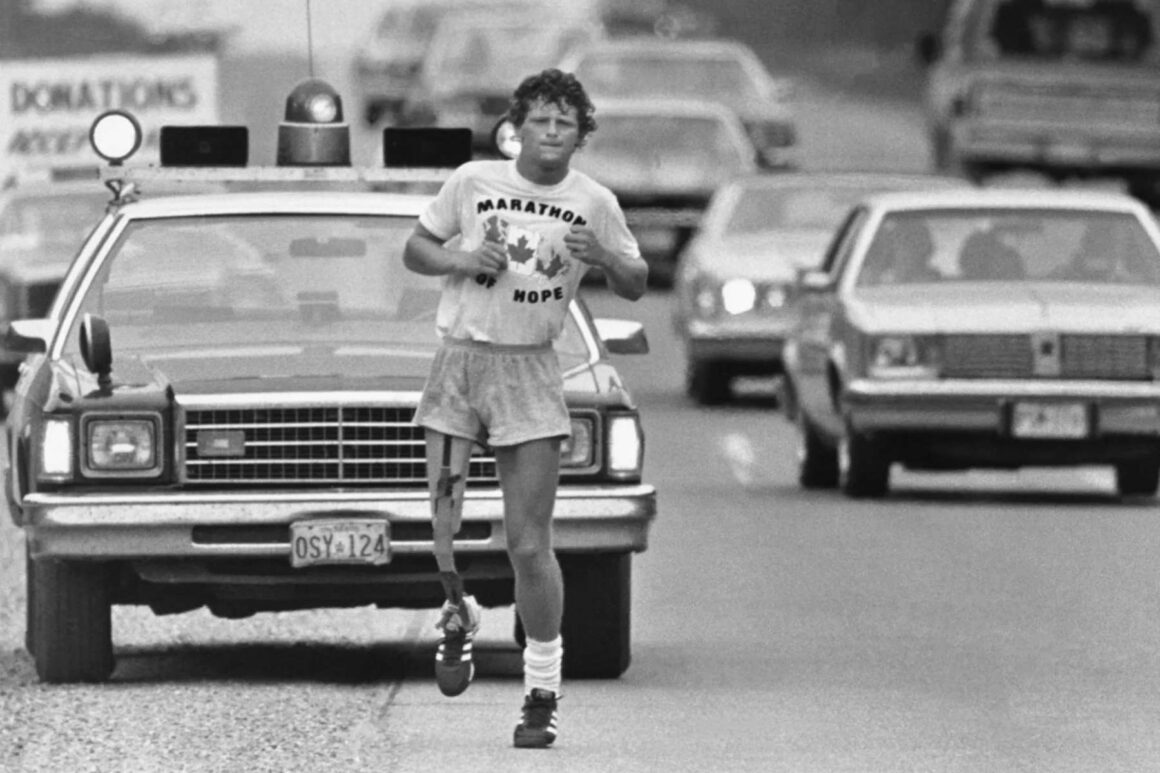
Terry Fox was born on July 28, 1958, in Port Coquitlam, British Columbia. He became an inspirational figure from a young age. His love for sports showed in his early years, with a competitive spirit that would mark him.
As a teenager, Terry was dedicated to sports. He played basketball and cross-country running. His hard work and passion for athletics were clear.
In 1977, Terry started as a Kinesiology student at Simon Fraser University at 18. His athletic talent and determination made him stand out. No one could have guessed he would become a national hero, turning personal tragedy into hope.
Terry’s love for sports shaped his character. His commitment to physical challenges laid the groundwork for his incredible journey. Even before his cancer diagnosis, Terry showed the courage and spirit that would make him a legend in Canada.
Despite the challenges he faced, Terry’s early life taught him to persevere. His athletic training and competitive nature were key to his future marathon of hope. It showed that true strength comes from the heart and spirit, not just physical ability.
The Cancer Diagnosis
In March 1977, 18-year-old Terry Fox faced a life-changing moment. He was diagnosed with osteosarcoma, a rare and aggressive bone cancer. This diagnosis would test his extraordinary determination.
The doctors told him to have his right leg amputated, 15 cm above the knee. They said this was to stop the cancer from spreading.
The cancer research fundraiser that would later define his legacy began in the hospital ward. During his treatment, Terry saw the suffering of other cancer patients. This experience sparked a powerful resolve within him.
He watched young patients battling similar challenges. This transformed his personal struggle into a broader mission of hope and awareness.
Chemotherapy and recovery were grueling, but Terry’s spirit remained unbroken. He trained rigorously with his prosthetic leg, showing remarkable resilience. Within months, he completed a 27 km marathon in Prince George.
This proved that physical limitations could not restrict his incredible willpower.
Terry’s cancer diagnosis became the catalyst for his incredible journey. His determination to make a difference would soon inspire millions. It turned a personal health battle into a national movement of cancer research support.
Overcoming the Amputation
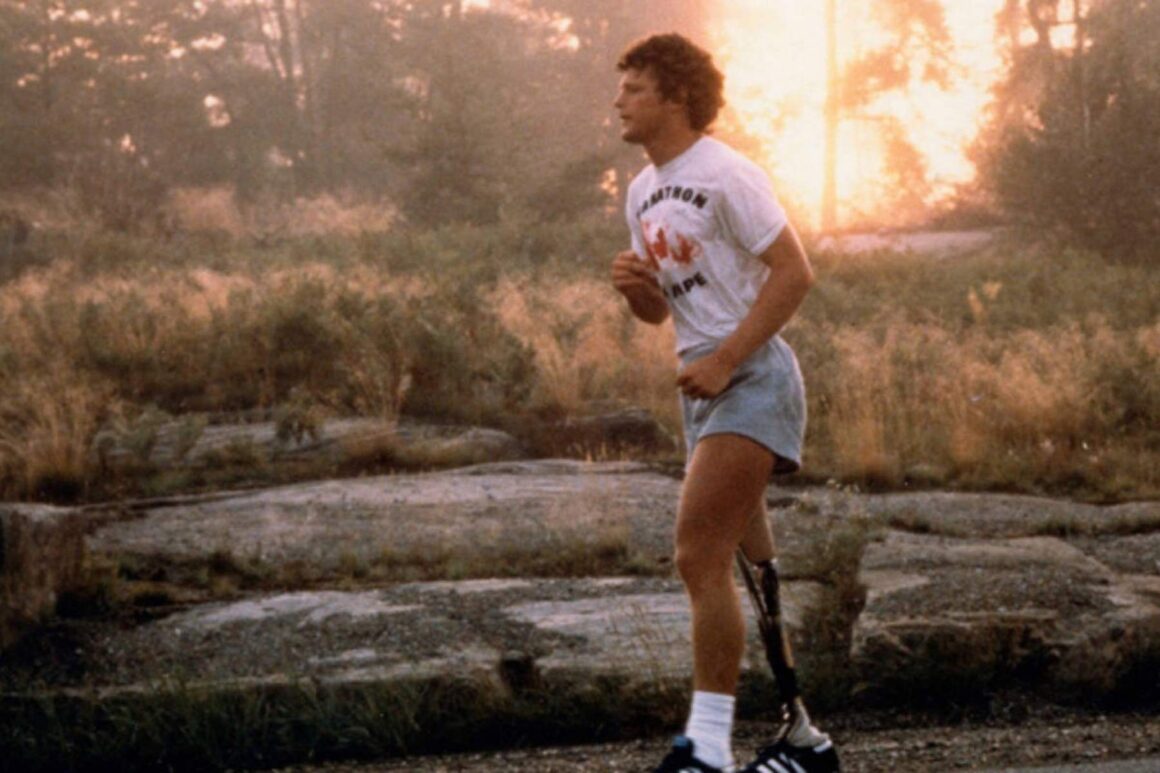
Terry Fox started his journey as an amputee athlete with great determination. He lost his right leg to bone cancer at 18. Despite this, he refused to let his disability stop him.
At first, Terry could only run half a mile. But he kept pushing, showing incredible perseverance. His hard work helped him overcome what seemed impossible.
Wheelchair basketball was his first sport. Fox won three national championships, showing his competitive spirit. His mental strength turned his prosthetic leg into a powerful tool.
Training was Terry’s daily goal. He worked hard to increase his running distance. He even developed a special running style for his prosthetic leg.
By the time he started the Marathon of Hope, he could run 25 to 30 miles a day. This was an amazing feat for any athlete, even more so for an amputee.
Terry’s goal was never to seek sympathy. He wanted to show what humans can achieve. His journey proved that with determination and the right mindset, anything is possible.
The Marathon of Hope
On April 12, 1980, Terry Fox started an incredible journey. He dipped his prosthetic leg in the Atlantic Ocean near St. John’s, Newfoundland. This marked the start of his Marathon of Hope.
Fox aimed to run across Canada to raise money for cancer research. Each step showed his strength and courage. He wanted to get $1 from every Canadian, turning his personal struggle into a national movement.
Every day, Fox ran long distances, adapting to his prosthetic leg. He covered 26 miles daily, a remarkable achievement. His journey touched the hearts of Canadians everywhere.
Before he had to stop, Fox had run 3,339 miles through six provinces. His run lasted 143 days, raising over $24 million. It showed that one person’s bravery can inspire a whole nation to fight cancer.
Challenges on the Road
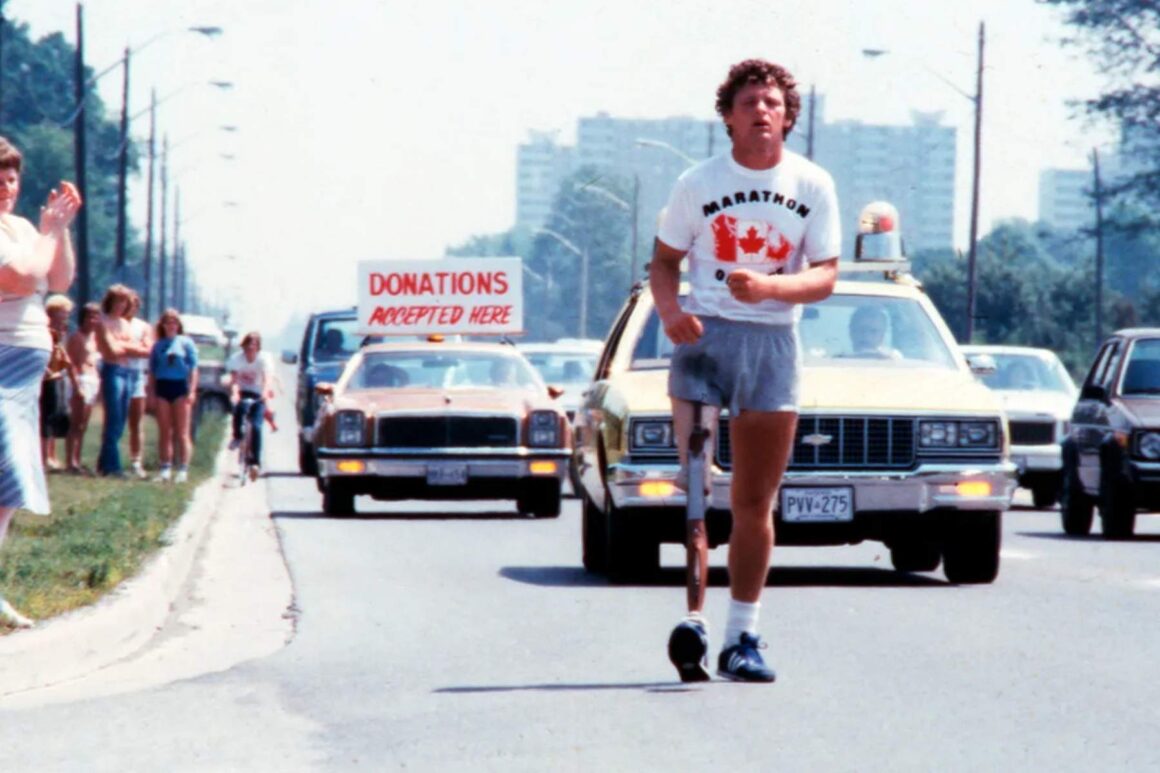
Terry Fox’s Marathon of Hope was a huge test of his will. He ran 42 kilometers a day with a prosthetic leg. Every step was hard, both physically and mentally.
The weather was tough too. He faced hot summers and sudden cold. His prosthetic leg was always uncomfortable, making each step harder.
But people along the way helped a lot. They cheered him on and gave him what he needed. Their support kept him going, even when it was hard.
Medical issues also tried to stop him. He had a lot of pain and muscle strain. But he never gave up. He saw each problem as a chance to show how strong we can be.
Keeping his mind strong was key. Fox knew his run was more than just for him. It was for all those fighting cancer. His courage turned a personal fight into a movement that inspires many.
Legacy and Impact
Terry Fox’s spirit of giving turned his fight against cancer into a national movement. He ran 5,373 kilometres across Canada, raising over $1.7 million for cancer research. His journey was cut short, but his impact lives on.
The Terry Fox Run has become a symbol of hope and strength. Started in 1980, it has raised over $850 million for cancer research. It shows how one dream can inspire millions.
Fox’s message reached over 400 towns and cities, spreading hope and determination. He aimed to get $1 from every Canadian, sparking a wave of support. His dream became a reality, uniting people across the country.
The Terry Fox Research Institute works with 42 cancer research centers in Canada. It continues Terry’s work in advancing cancer research. Through scholarships, grants, and runs, Terry’s legacy inspires hope for cancer patients and researchers.
His story shows how one person’s courage can start a movement of kindness and scientific progress. It encourages people to fight cancer and support vital research.
Remembering Terry Fox Today
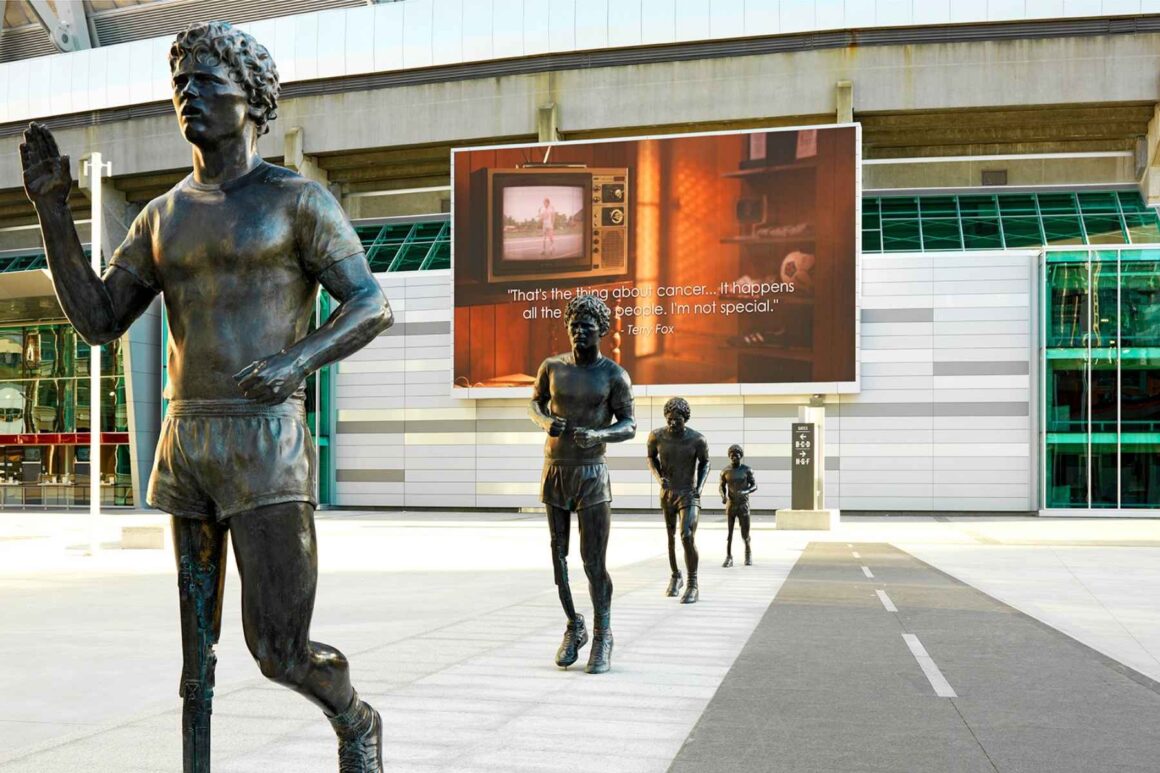
Terry Fox is a legendary figure in Canada, inspiring many with his story. His journey has made him a symbol of hope and courage. Today, many places and institutions are named after him, keeping his legacy alive.
The Terry Fox Run is a big tribute to his spirit. Started in 1981, it has grown to include millions worldwide. It has raised over $850 million for cancer research, supporting over 1,300 projects.
Provinces in Canada have honored Terry Fox in many ways. Manitoba, for example, named the first Monday in August as Terry Fox Day in 2015. Schools and public spaces across the country celebrate his bravery and determination.
His impact goes beyond just raising money. Terry Fox represents the power of overcoming big challenges. His story motivates people to strive for greatness and make a difference in the world.
Wrapping up: Terry Fox
The story of Terry Fox is more than just a life. It’s a powerful symbol of human strength. His Marathon of Hope turned into a global fight against cancer, inspiring millions to believe in themselves.
Terry’s legacy lives on through the Terry Fox runs. These events have raised over $850 million for cancer research. What started as a goal to collect $1 from every Canadian has become a worldwide movement. It celebrates hope, courage, and the human spirit.
Terry’s impact goes beyond just raising money. He showed us that one person can change how we see disability, perseverance, and medical limits. Thanks to Terry, cancer research has made big strides, thanks to the Marathon of Hope and the Terry Fox Foundation.
Thinking about Terry’s journey reminds us of true heroism. It’s not about being perfect. It’s about facing challenges with heart, resilience, and an unbreakable spirit. His message is clear: every step counts, every contribution matters, and one person can make a difference.

